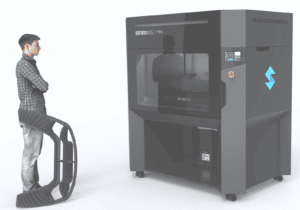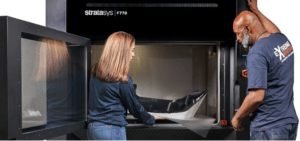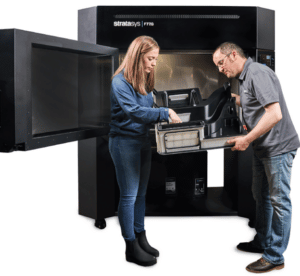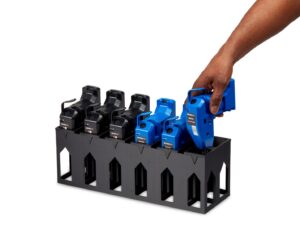Stratasys F770 – Making BIG part Easy AND Affordable
Stratasys F770
For a long time trying to make any large parts on an Additive Manufacturing machine has had lots of issues plaguing it. Either you get some cheap machine that you have to fight with for a long time. Doing reprint after reprint to deal with curling and warping and parts delaminating and bird-nesting on you. The other option was to buy a large industrial grade additive machine. These can cost hundreds of thousands of dollars while preventing the need to pay an engineer valuable time to tinker around with a cheaper machine.

A little while ago Stratasys came out with a better solution for a professional 3D Printer that doesn’t break the bank. Before the F770, if you wanted to print a part that was 3ft long in one print job, you would have had to use a F900 FDM print or a J4100 PolyJet printer. The F900 still provides a greater breadth of FDM material options and PolyJet 3D Printing does make sense with some applications. That said, if size is what you’re after you can use the F770 with its build area of 39.4 in X 24 in X 24 in.

The F770 has a fully heated build chamber to 3D print within a controlled environment, preventing any warping or curling issues. It has the reliability and repeatability demanded of any Stratasys level 3D printer. You can print your part that is over 3ft long and 2ft wide with the peace of mind of coming back to the machine after a day or 2 of printing to find a finished, high quality part.
The F770 can be very useful for building large functional jigs and fixtures for use in manufacturing and the factory floor. Without many limitations for part size, you can print life sized fixtures out of ABS or ASA plastics, in one piece, to be immediately used.

3D printed parts when and where required on demand.
The ability of additive manufacturing to replace assemblies is just one of the technology’s many advantages. Probably the most important efficiency-enhancing capability within supply chains is its ability to enable virtual inventories and a digital (for the most part) rather than physical supply chain. Many manufacturers have encountered the situation where a tool or fixture gets damaged and needs to be replaced ASAP. There used to be two main options for this issue. The first would be to have an extra one already paid for and sitting in inventory incase the need arises. The other is to try and get a rush order through another company to get one made and pay for the expedited service, if it’s even available. Now, there is a third option. You can pull the file from your digital inventory and 3D print on demand to have the needed parts remade as soon as possible. With a 3D printer the part will be rebuilt with a hands-off method in-house and can be redone only as much as necessary. That’s not to mention rapid prototyping or all of the other great uses you could see.

Tim Crennen
Sr. Applications Engineer
Computer Aided Technology

 Blog
Blog